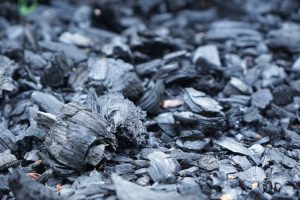Short answer
The decomposition time of socks can vary depending on various factors such as the material composition and environmental conditions. However, on average, it takes around 1 to 5 years for socks to decompose in a landfill environment.
More
Socks, like any other garment, undergo decomposition over time. The decomposition process involves the breakdown of organic fibers in the sock, such as cotton or wool. When exposed to environmental factors like moisture, heat, and microorganisms, the fibers begin to deteriorate.
The decomposition of socks starts with the natural dispersion of moisture. When the sock comes in contact with sweat or water, the fibers absorb the liquid. This moisture, combined with the warmth of the foot, creates an ideal environment for microorganisms and bacteria to thrive. These microorganisms feed on the fibers, breaking them down into simpler organic compounds.
As the decomposition process progresses, the fibers become weaker and lose their structural integrity. The constant stretching, washing, and drying of socks also contribute to their degradation. Eventually, the weakened fibers start to unravel and break apart, resulting in holes or thinning areas in the sock material. Over time, the sheer wear and tear, combined with the ongoing decomposition, lead to the deterioration of socks, making them unsuitable and ultimately necessitating their replacement.
In conclusion, the decomposition of socks is a natural process driven by various factors such as moisture, heat, and microorganisms. The breakdown of organic fibers within socks occurs over time, leading to their eventual deterioration. Understanding the decomposition of socks helps us recognize the need to replace worn-out socks that no longer provide adequate support or comfort.
Is it possible to recycle socks?
Yes, it is possible to recycle socks. Socks are typically made from materials like cotton, wool, or synthetic fibers, which can be recycled or upcycled into new products. Recycling socks involves the process of collecting old or worn-out socks, sorting them by material type, and then separating any non-recyclable elements like elastic bands. Once sorted, the socks can be turned into materials for applications such as stuffing, insulation, or even new yarn for fabric production. Some companies and organizations also offer sock recycling programs where you can send in your old socks and ensure they are properly recycled.
Recycling socks can have several benefits for the environment. By diverting socks from ending up in landfills, it helps reduce the amount of textile waste in the world. Recycling also conserves resources, as it reduces the need for virgin materials that would otherwise be used to produce new socks. Additionally, recycling socks can help decrease the carbon footprint associated with the production and disposal of socks, as recycling saves energy and reduces greenhouse gas emissions.
It is important to note that not all recycling programs accept socks, especially if they are heavily soiled or have non-recyclable components like elastic. However, research and initiatives are being conducted to find innovative ways to recycle socks more efficiently, such as exploring new recycling technologies or developing biodegradable sock materials. Ultimately, recycling socks is a step towards a more sustainable and circular economy.
Intresting facts
- Decomposition of socks is a natural process that occurs when the fibers of the fabric break down due to environmental factors.
- Socks made from natural materials like cotton can decompose faster compared to those made from synthetic materials like polyester, which can take much longer to break down.
- The decomposition rate of socks can vary significantly depending on environmental conditions such as temperature, moisture, and the presence of microorganisms or oxygen.
- While most of the sock's material may decompose over time, it is important to note that certain synthetic materials like elastane (commonly used in sock elastic) may not completely break down and can persist in the environment for an extended period.
- Decomposition of socks can release various organic compounds and nutrients back into the environment, potentially contributing to the nutrient cycle and enriching the soil.
Summary and final thoughts
The decomposition time of socks varies depending on the materials used. Cotton socks typically decompose faster, taking approximately 1 to 5 months to break down in a composting environment. However, synthetic materials like polyester, which are commonly found in socks, can take anywhere from 20 to 200 years to decompose. It is important to note that these estimates are based on ideal conditions, and factors like moisture and temperature can affect decomposition times significantly. Considering the abundance of synthetic materials used in socks, it is clear that they have a significant environmental impact. To mitigate this, opting for natural and biodegradable materials or recycling old socks is recommended to minimize the long-lasting waste caused by synthetic socks.




